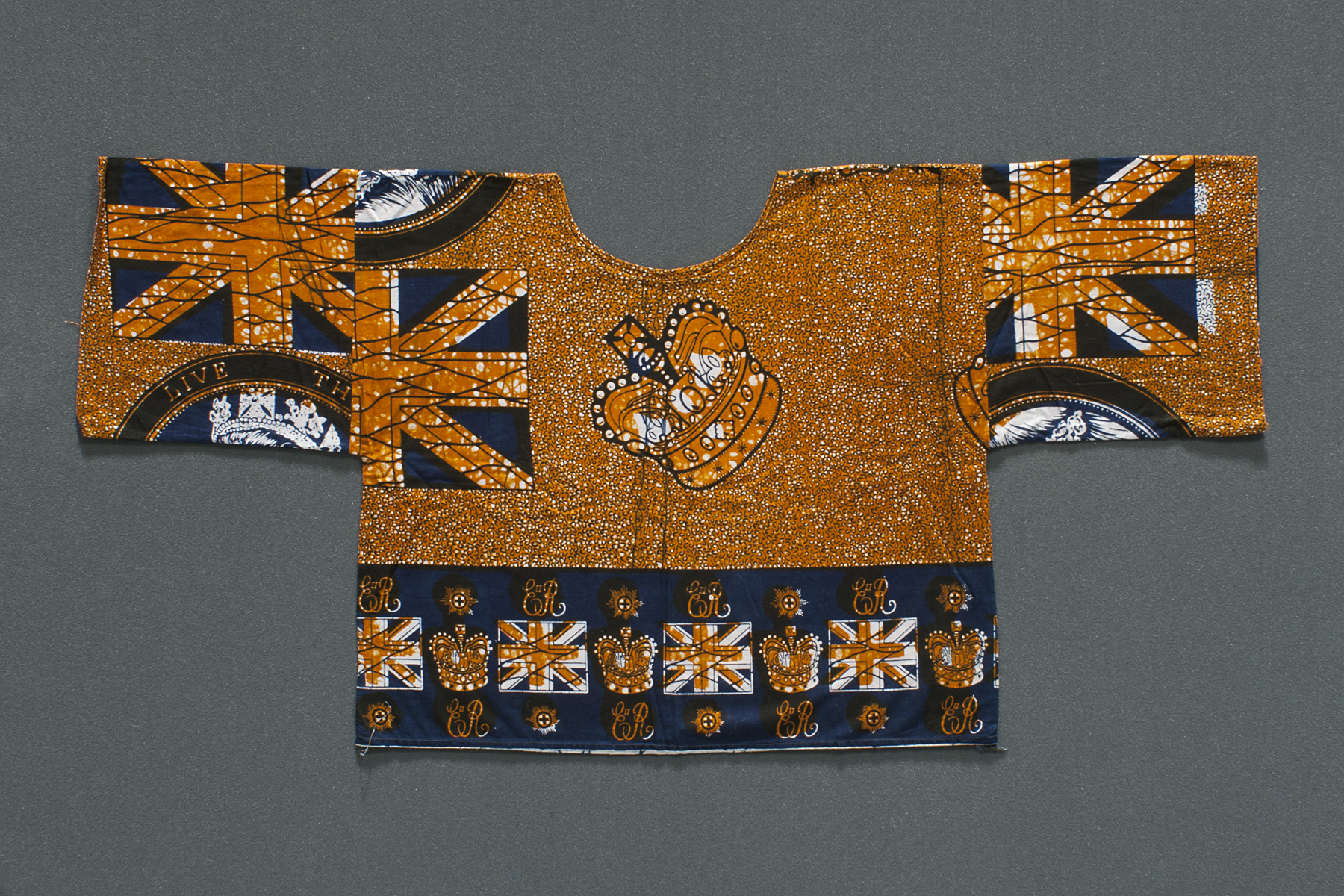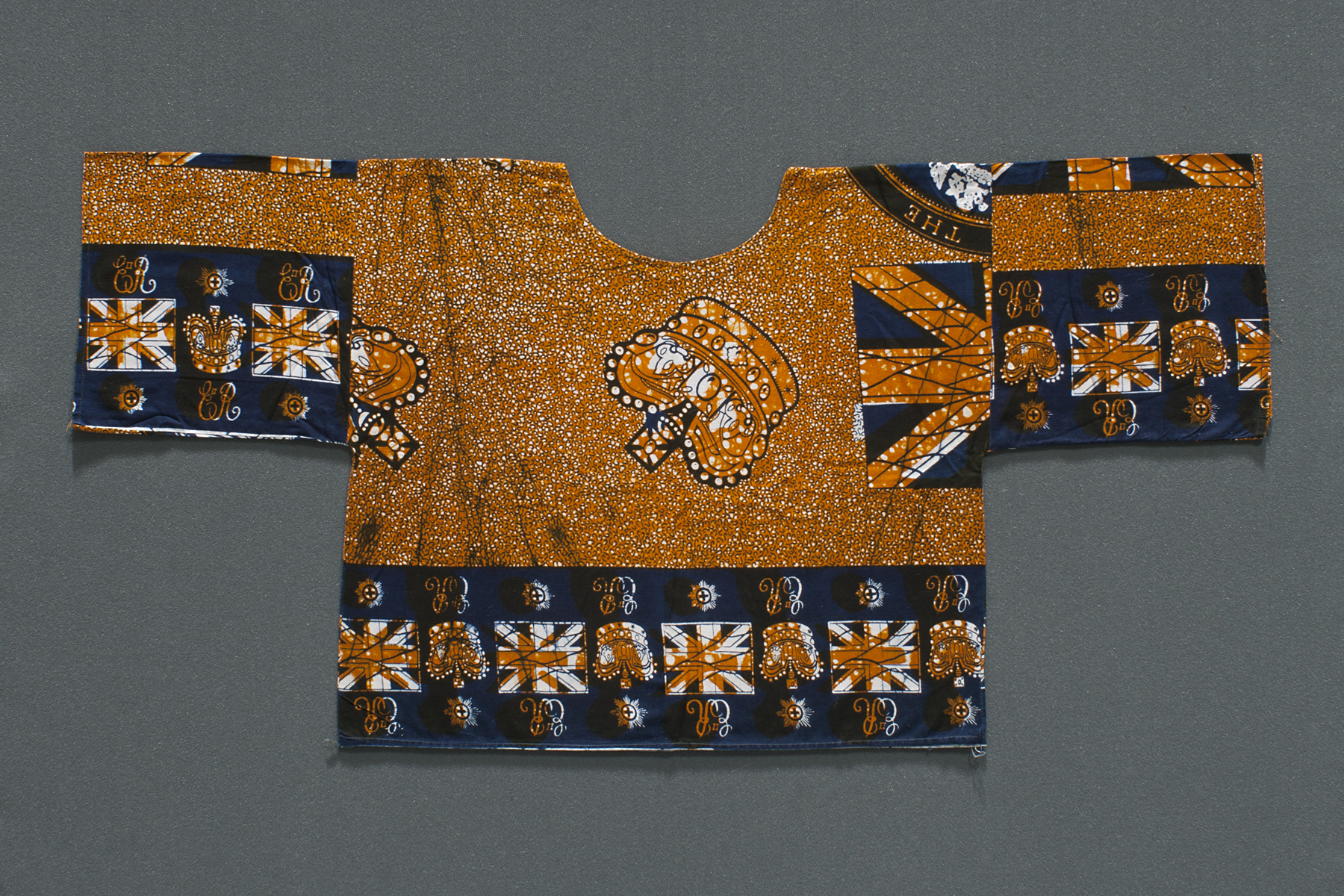women's shirt with Queen Elizabeth II, unrecorded Hausa-Fulani artist
Artwork Overview
unrecorded Hausa-Fulani artist, artist
women's shirt with Queen Elizabeth II,
1981
Where object was made: Kano, Nigeria
Material/technique: cotton; batik
Credit line: Gift of Professor Beverly Mack
Accession number: 2011.0239.01
Not on display
If you wish to reproduce this image, please submit an image request




